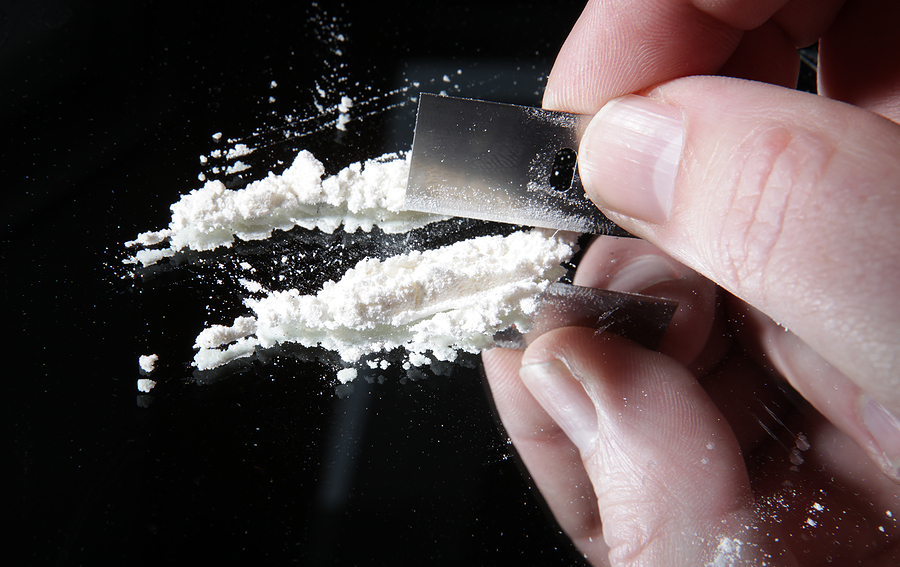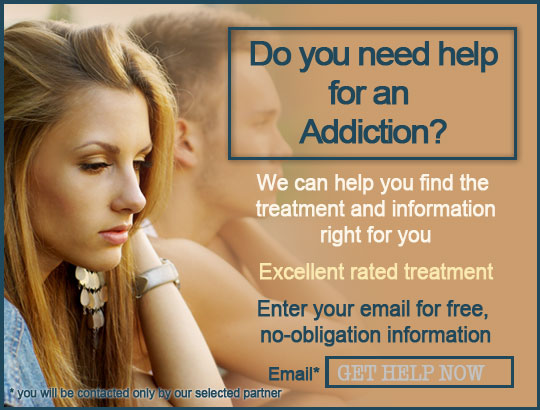DRUGS - use, abuse and addiction
By Charlotte Fantelli and Addictions UK
The use of recreational drugs seems to have become part of our culture since the mid-1900s. Flower power, hippy music and the mass media popularised the use of drugs in the 1960s and now they seem to pervade all aspects of society. If you and your direct family haven’t been affected by drug use, then you probably know someone who has.
Facts
The 2009/10 British Crime Survey (BCS) suggested that 8.6% of adults had used an illicit drug in the last year (almost 3 million people). This is admittedly the lowest level since the survey started measuring this in 1996, and is down from 10.1% in the previous survey – a decrease which the report puts down to a notable decline in two of the more commonly used drugs. However, 8.6% of adults is still a significant percentage of our population.

Different studies give different figures, but what is clear is that men are more likely to abuse drugs than women – some studies say twice as likely while others estimate the gender divide to be bigger. The UK Drug Policy Commission published a survey stating that people who identified as lesbian, gay or bisexual were about three times more likely to report having taken illicit drugs than heterosexuals. Of this group, gay and bisexual men were found to most commonly use poppers and cannabis. In the general population the most commonly used illicit drug is cannabis, while the most common addiction that results in detox and rehabilitation service use is heroin.
People who use drugs are at increased risk of many physical and psychological disorders, and are more likely to engage in dangerous behaviours including crime and risky sex.
Risk factors relating to drug abuse
Risk factors are varied and factors for one person may not apply to another (also bear in mind that most people who are exposed to these factors will not become drug users). However we can determine that those who are exposed to the following factors are more at risk of drug abuse:
• traumatic life events
• mental health issues
• a guardian or carer who was/is a user
• genetic predisposition to addictive behaviours
• availability of substances, usually from a young age
• poverty
• those who show early aggressive behaviour.
As we can see from this list, there are individual, family, peer and community issues that all play a part; therefore early intervention must be looked at in all these areas.
Mental health and drug abuse
What is particularly interesting is the rate of co-morbid drug abuse and other mental health issues (where two disorders occur simultaneously). The 2007 report Comorbid Drug Abuse and Mental Illness by the National Institute on Drug Abuse (NIDA) addresses the prevalence of mental health disorders in those who abuse drugs, and of drug abuse in those who have a mental health issue. There are many reasons these conditions may coexist: drug abuse can cause mental illness, mental illness can lead to drug abuse, and those who are most at risk of one commonly have higher risk factors that contribute to the other – for example, a traumatic childhood or exposure to abuse.
According to this research, compared with the general population:
• patients with mood or anxiety disorders are about twice as likely to also suffer from a drug disorder
• patients with drug disorders are roughly twice as likely to be diagnosed with mood or anxiety disorders.
The Office of National Statistics’ report Tobacco, Alcohol and Drug Use and Mental Health in 2000 also shows that people with mental health conditions were between 2.5 and 6 times more likely to use illicit substances.
Why do people take drugs?
The reasons why anyone takes that first ‘hit’ of drugs are many and varied. Peer pressure seems to be a common reason. Often people take drugs because they want to change something or escape something in their lives. Drugs provide the user with a quick fix or feelings that they desire – the drugs are seen at the start as a solution, but for most the drugs soon become the problem.
Drug use, abuse and addiction

It is important we do not generalise. Drug use, abuse and addiction is a vast subject and each drug, each circumstance is different. There is a lot of difference between recreational drug use and addiction, both in terms of habit and psychology. Please see the Common Signs of Addiction table on the right.
Some drugs are more addictive than others, some are deemed ‘psychologically addictive’ meaning that the behaviour and ritual of taking a drug can be habit-forming and the user creates a dependency, rather than there being a chemically induced addiction. Simon Stephens from Addictions UK tells us ‘Aproximately 10% of the poulation is at risk developing a pathological dependence once they have expierienced a drug that fits their receptor system. A pathological addiction can occur with any drug or behavior such as cannabis or eating disorders and can be as serious to the sufferer as heroin is seen to be in the general population.’
Substances such as heroin create a physical addiction as well as a psychological dependency, which is why we see the largest percentage of those seeking treatment with this addiction. There are commonalities that can be used as a guide: recreational drug use will be a part of the user’s life, drug addiction will be the addict’s life. A drug addict will be controlled by his/her addiction rather than being in control. Led by the need to get their fix, an addict will have this priority higher than any other.
The effects of any drug use can be devastating not only for the user but also for those around them. We cannot underestimate the cost of recreational drug use. Those who use drugs in this way are more likely to indulge in other risky behaviours and put themselves in danger. According to a 2007 report by Substance Abuse and Mental Health Services Administration, drug users are at much higher risk of STDs. “Substance abuse and risky sexual behaviour are closely connected,” said Terry Cline, PhD, SAMHSA Administrator. “This report puts into sharp focus just one of the many potential lifetime consequences for young adults of heavy drinking and drug use. Unchecked heavy drinking and drug use can lead to serious dependence-related problems, including loss of friends and family, employment, housing, health, and even life. Young adults need to seriously consider the choices they are making and the impact those choices can have on their futures.” This report also indicated that women who both drink heavily and abuse drugs are at greatest risk.
Often this type of recreational use will progress and the user will seek new highs which can, in turn, lead to addiction. Addiction often starts through the use of a drug recreationally. With drugs such as heroin, crack, cocaine and methamphetamine that initial use can very quickly become a serious addiction as these substances act powerfully upon the brain and make the user crave the drug as if it were a necessity. Please see our Commonly Used Street Drugs table overleaf for more information about specific drugs.
The cost
The cost of illegal drug use cannot be counted in financial terms. The true cost comes in loss of appetite for life, loss of work ethic, loss of mental health and at worst loss of life.
Drug-related deaths are estimated to account for a fifth of all deaths among men in their twenties, and a report in The Independent in 2000 showed that in the seven years prior, drug deaths had doubled. Heroin and cocaine were considered largely responsible for the increase. More recently we have seen reported deaths from newer ‘legal highs’.
Addiction treatment
Medication and psychological therapies can be used in recovery from drug addiction. Medication can be used effectively in the early stages of detoxification, and to ease symptoms of withdrawal.
However it is very important that a ‘whole person’ (holistic) approach is used in the treatment of addiction. Even when medication and/or drug substitutes are used throughout the detox process, each patient needs to be supported psychologically and socially.
NIDA states that medication and behavioural therapy, especially when combined, are important elements of an overall therapeutic process that often begins with detoxification, followed by treatment and relapse prevention.
Factors in long-term recovery include ensuring the individual is adequately supported in the community and has access to practical and psychological help to prevent relapse.
Resources
If you, or someone you love, are affected by drug abuse there is help at hand. There are many services out there provided by NHS and social services as well as private alternatives. Your GP can guide you through what is available in your area and what may be best in your individual circumstances. Many sites on the internet can be a great initial place to find information and help. Here are a few which could put you on the path to knowledge and recovery:
www.talktofrank.com
www.addictionrecoveryguide.org
Carers/relatives
How painful is it to stand by and watch while someone you love falls into the clutches of drug addiction? Please remember that you can’t stop someone from abusing drugs – but you can stop someone from abusing you. It is up to the user/addict to overcome their problem and although there are many ways you can help, you cannot do it for them. There is help available for families of addicts so do not suffer alone.
Help for families
www.famanon.org.uk – Families Anonymous, a charity dedicated to supporting the families of addicts. There are regular groups and a helpline: 0845 1200 660
www.drugfree.org – The Partnership, helping parents prevent, intervene and find treatment for their children
With thanks to Addictions UK for their read through and advice.
Drug abuse facts
• Findings indicate that in England in 2009 around 250,000 11-15 year olds had taken drugs (including glue, gas and other volatile substances) in the last month and around 450,000 had taken drugs in the last year. (Source: NHS Information Centre – Smoking, drinking and drug use among young people in England in 2009)
• The number of heroin users doubled every four years during the 1990s. (Source: Centre for Reform – Heroin. The Failure of Prohibition and What To Do Now", 2001)
• The UK is believed to consume approximately 25 to 35 tonnes of heroin a year. (Source: National Criminal Intelligence Service – UK Threat Assessment, 2003)
• In 2002 the UK had the highest level of drug-related deaths in Europe.
(Source: Drugscope report for the European Monitoring Centre for Drugs and Drug Addiction, 2002-03)
• The number of deaths from opiate overdoses in England and Wales more than doubled in the 1990s, from less than 400 in 1993 to nearly 1,000 in 2000. (Source: Joseph Rowntree Foundation – Prescribing Heroin: what is the evidence?, 2003)
Please see issue 4 Uncovered magazine for full guide and individual drug information.
Further reading
For more information on Addictions, please visit:






